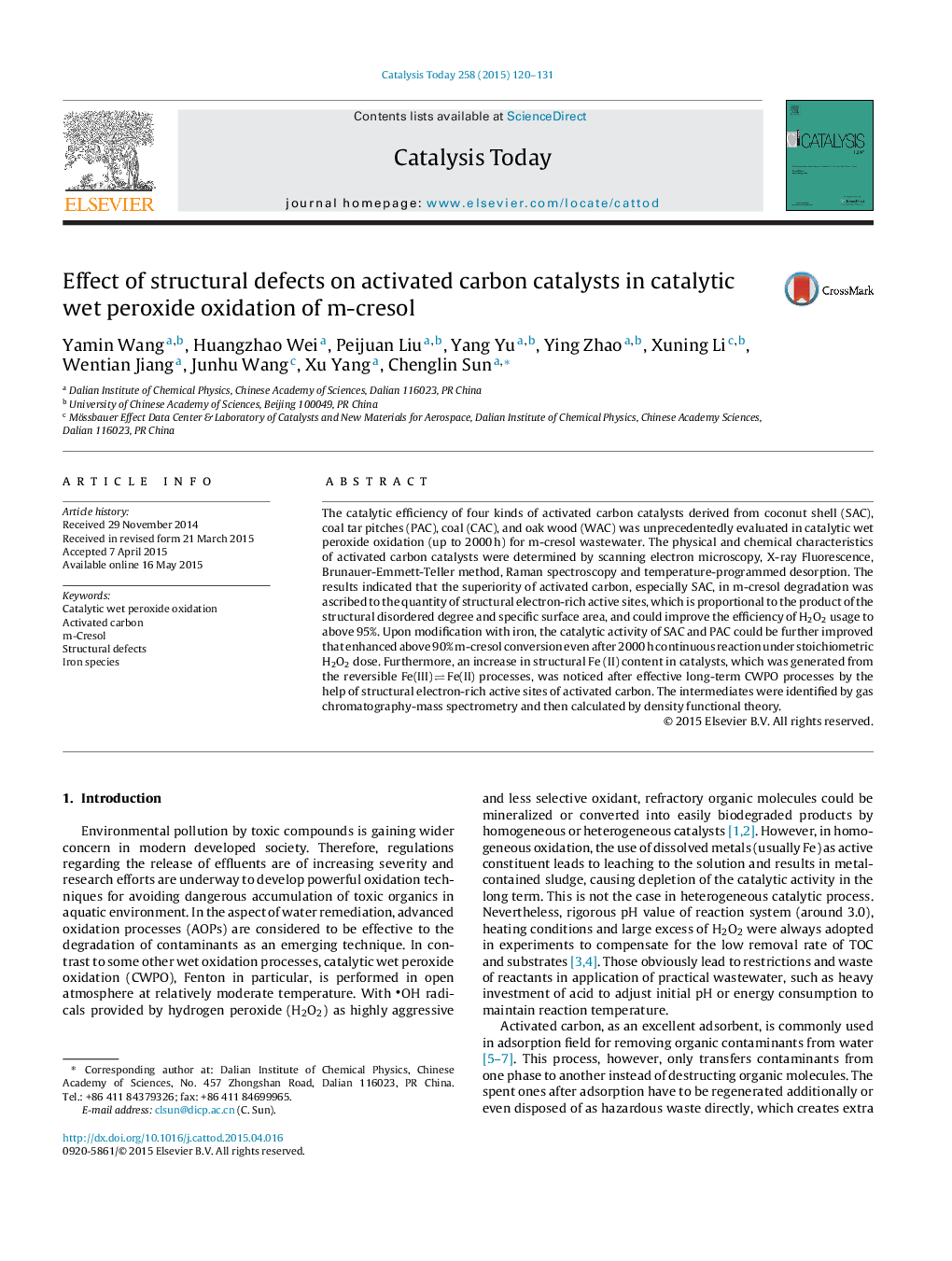| کد مقاله | کد نشریه | سال انتشار | مقاله انگلیسی | نسخه تمام متن |
|---|---|---|---|---|
| 53894 | 46988 | 2015 | 12 صفحه PDF | دانلود رایگان |

• The longest CWPO reaction by carbon catalysts running for 2000 h was reported.
• Catalytic activity is related with structural defects on carbon surface.
• The conversion of Fe(III) to Fe(II) on carbon surface after reaction was detected.
• The degradation mechanism of m-cresol was studied and analyzed by DFT.
The catalytic efficiency of four kinds of activated carbon catalysts derived from coconut shell (SAC), coal tar pitches (PAC), coal (CAC), and oak wood (WAC) was unprecedentedly evaluated in catalytic wet peroxide oxidation (up to 2000 h) for m-cresol wastewater. The physical and chemical characteristics of activated carbon catalysts were determined by scanning electron microscopy, X-ray Fluorescence, Brunauer-Emmett-Teller method, Raman spectroscopy and temperature-programmed desorption. The results indicated that the superiority of activated carbon, especially SAC, in m-cresol degradation was ascribed to the quantity of structural electron-rich active sites, which is proportional to the product of the structural disordered degree and specific surface area, and could improve the efficiency of H2O2 usage to above 95%. Upon modification with iron, the catalytic activity of SAC and PAC could be further improved that enhanced above 90% m-cresol conversion even after 2000 h continuous reaction under stoichiometric H2O2 dose. Furthermore, an increase in structural Fe (II) content in catalysts, which was generated from the reversible Fe(III) ⇌ Fe(II) processes, was noticed after effective long-term CWPO processes by the help of structural electron-rich active sites of activated carbon. The intermediates were identified by gas chromatography-mass spectrometry and then calculated by density functional theory.
Figure optionsDownload high-quality image (134 K)Download as PowerPoint slide
Journal: Catalysis Today - Volume 258, Part 1, 1 December 2015, Pages 120–131